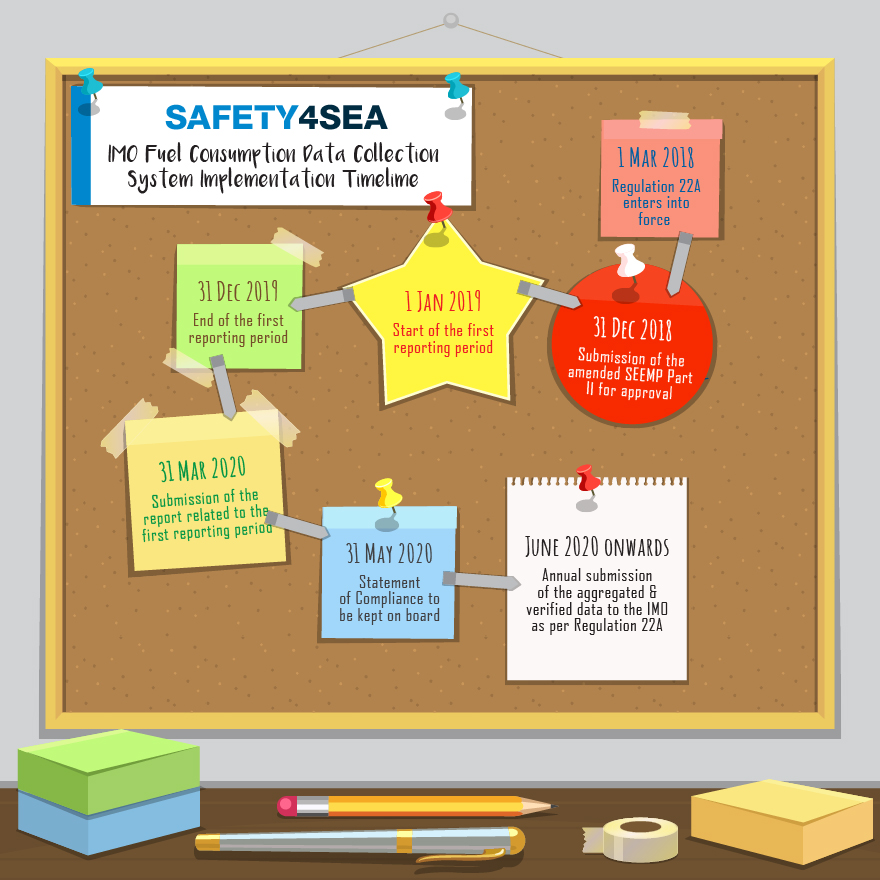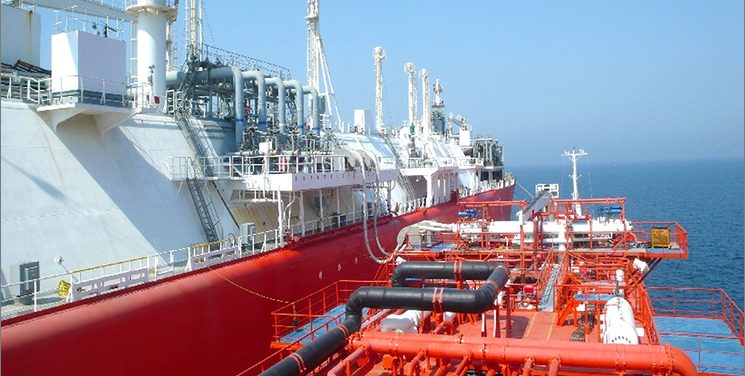The IMO fuel oil consumption data collection system (IMO DCS) becomes effective on 1 March 2018, requiring from ships of 5,000 gross tonnage and above to submit to their Administration annual reports on fuel oil consumption. This is a new requirement added to chapter 4 of MARPOL Annex VI, entitled as Regulation 22A.
In particular, Regulation 22A is expected to enter into force on 1 March 2018, with first data “calendar year” beginning 1 January 2019. As from that date, ships shall collect fuel oil consumption data according to a methodology to be described and included in the Ship Energy Efficiency Management Plan (SEEMP Part II) by latest 31 December 2018. This shall be in line with the 2016 Guidelines for the Development of a Ship Energy Efficiency Management Plan adopted by Resolution MEPC.282.
Following the end of each calendar year, by not later than 31 March of the subsequent year, ships shall submit to flag State or RO reports on fuel oil consumption data for the previous calendar year. The report related to the first reporting period which starts on 1 January 2019, shall be submitted by not later than 31 March 2020.
Upon verification of the submitted data, in line with Resolution MEPC.292(71) adopting the 2017 Guidelines for Administration verification of ship fuel oil consumption data, classification societies shall issue by 31 May 2020 to the ships a Statement of Compliance related to fuel oil consumption which should be kept on board for the period of its validity. The Statement of Compliance shall be valid for the calendar year in which it has been issued and for the first five months of the subsequent calendar year.
The disaggregated data that underlies the reported data for the previous calendar year shall be readily accessible for a period of not less than 12 months from the end of that calendar year and be made available to this Directorate upon request.
Ship owners and ship operators are encouraged to start considering the methodology for collecting the fuel oil consumption data that is most appropriate for each ship and its operation profile, incorporating Part II in their SEEMPs, in accordance with the sample form of ship fuel oil consumption data collection plan included in Appendix 2 of the 2016 Guidelines for the development of a Ship Energy Efficiency Management Plan. The data collection plan should be submitted to the classification societies for approval.

Information to IMO Ship Fuel Oil Consumption Database
- IMO number
- Period of calendar year covered
- Technical characteristics of the ship (ship type, gross tonnage, net tonnage, deadweight tonnage, power output of main and auxiliary engines)
- EEDI (if applicable)
- Ice class
- Fuel oil consumption, by fuel oil type, in metric tonnes and methods used for collecting fuel oil consumption data
- Distance travelled (over ground), hours underway
EU MRV vs IMO System
The table below sets out the core components of the two systems alongside each other for ease of comparison. The key differences of note include:
- The EU MRV regulation requires reporting of actual cargo carried onboard, fuel consumed, and CO2 emitted, whereas the IMO only requires reporting of fuel consumed
- For EU MRV, calculations are made by the shipping companies and verified by an accredited verifier. For IMO, the calculations are verified by the administration, according to national procedures
- The EU plans to make this information publicly available whereas, for IMO, the raw data will only be available to IMO and flag states who will then share aggregated anonymised data.
| EU MRV | IMO System | |
| Monitoring | Ships 5000 GT and above | Ships 5000 GT and above |
| Voyages to/from EU port of calls | All voyages | |
| EU Monitoring Plan | Updated SEEMP | |
| Starting 01st January 2018 | Starting 01st January 2019 | |
| First Monitoring period | 2018 | 2019 |
| Exemptions | Warships, naval auxillaries, fish-catching/processing ships, ships not propelled by mechanical means and government ships used for non-commercial purposes. | TBD |
| Parameters | Fuel consumption (port/sea) | Fuel Consumption |
| Transport work (based on actual cargo carried) | Distance | |
| Distance | Time | |
| Time | ||
| Verification | Independent accredited verifiers | Flags/recognised organisations (work in progress) |
| Reports to | European Commission | Flag State |
| Certification | Document of Compliance (June 2019) | Statement of Compliance |
| Publication | Distinctive public database | Anonymous public daa |
Source: Julien Dufour, CEO, Verifavia































































